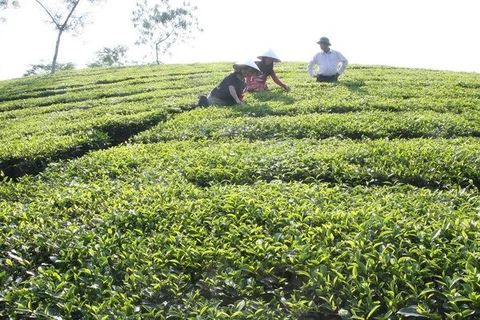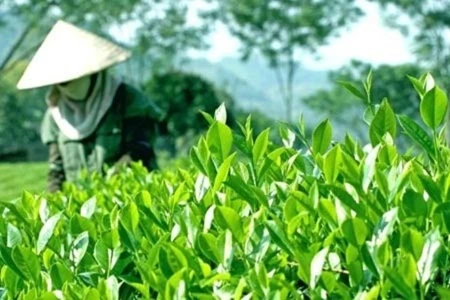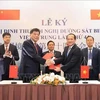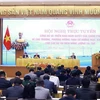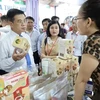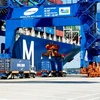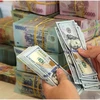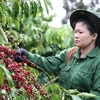 A worker processes tea for export at Phu Ben Tea Company in the northern province of Phu Tho (Source: VNS)
A worker processes tea for export at Phu Ben Tea Company in the northern province of Phu Tho (Source: VNS) Falling exports are putting pressure on the tea industry to enhance product quality amid rapid international integration associated with growing harsh competition.
The Ministry of Industry and Trade said Vietnam is the fifth largest tea exporter in the world, but tea is mainly exported as a raw product with low export price, equal to about half of the world's average price.
Statistics showed that tea exports dropped by 5.6 percent in volume to 79,000 tonnes and 4.8 percent in value to reach 134 million USD in the first eight months of this year, compared with the same period last year.
The ministry said quality is currently the greatest problem that the tea industry encounters, which could lead to loss of export markets to competitors.
There are many factors affecting the Vietnamese tea quality, including scattered cultivation, lack of management of pesticide use, outdated farming techniques and lack of coordination between plantations and processing and distribution.
President of the Vietnam Tea Association Nguyen Huu Tai said there should be an organisation to monitor the use of pesticides in tea cultivation to ensure its quality.
Minister of Agriculture and Rural Development Cao Duc Phat said tea is among the important agricultural exports of Vietnam, adding that attention must be paid to developing tea cultivation, especially improving tea quality and ensuring food hygiene standards.
Phat said the tea farming methods must be improved to meet hygiene standards for domestic consumption as well as exports, including the planning of tea plantation areas for processing firms. The development of a Vietnamese tea brand together with the organisation of trade promotion activities is also indispensable for boosting tea exports.
In addition, the ministry would tighten State management over the use of pesticides and fertilisers, while improve farming techniques for farmers, he said.
Notably, the ministry is planning to grant codes to tea plantation areas to trace the origins of tea as part of efforts to professionalise tea production.
The ministry's statistics showed that Vietnam's tea exports last year reached 133,000 tonnes, worth 230 million USD, ranking fifth in the world after China, India, Kenya and Sri Lanka.
The area under tea plantation totalled 130,000ha in the country by the end of 2014. Lam Dong, Thai Nguyen, Ha Giang, Phu Tho and Yen Bai were the provinces with the largest tea plantation areas.-VNA
